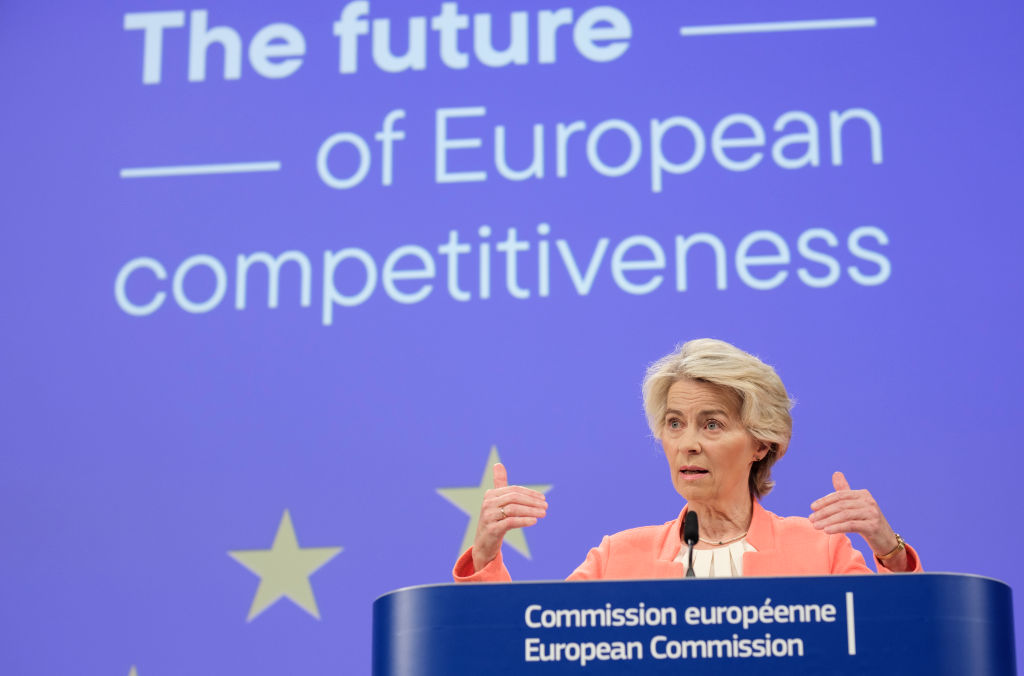 Euractiv is part of the Trust Project
Euractiv is part of the Trust Project
Formerly disparate factions of the telecoms infrastructure industry have come closer together, after two firms that formerly contradicted each other joined a lobby group in a bid to unify the sector ahead of the upcoming EU telecoms legislation.
Telecoms tower firms Italian Infrastrutture Wireless Italiane (INWIT) and Germany-based Vantage Towers have joined the European Wireless Infrastructure Association (EWIA), according to a Wednesday (9 October) press release.
EWIA had previously accepted only "independent" tower companies (towercos). Vodafone holds substantial positions in Vantage Towers and Telecom Italia and Vodafone in INWIT, which had disqualified them from membership in EWIA.
Accepting these two companies will ensure that the European towerco lobby speaks with a "more unified voice [...] in Brussels," said Marco Patuano, chairman of EWIA, in the press release.
The two towercos were in opposite camps during the negotiations of the EU's broadband law, the Gigabit Infrastructure Act (GIA), in 2023.
Policymakers were quite confused by the range of different actors who came to speak with them when the issue of regulating tower companies within the GIA became a hot topic in 2023.
These included independent and non-independent tower companies, but also telecom lobbies ETNO (now Connect Europe) and GSMA.
The split
At first, both factions sought to be regulated under the GIA to benefit from faster permit-granting processes. The split between the two types of tower companies derives from their ownership structure, but intensified during the GIA negotiations, when both factions tried put themselves out of scope of the regulation.At this point, independent towercos argued that their "neutral-host approach" was fundamentally different from non-independent towercos, aiming to remain exempt from regulation, while the latter would still be subject to it.
MEP Alin Mituța (Romania, Renew), rapporteur for the act, suggested that the two types of tower companies should be regulated differently.
"The initial idea was to regulate non-independent tower companies to prevent them from offering discriminatory access to their infrastructure for the companies that own some of their shares," Angelica Petrov, Mituța's assistant at the time, told Euractiv.
Mituța's position influenced the text adopted by the Parliament before entering inter-institutional negotiations in October 2023.
MEPs eventually dropped this provision, due to opposition by the Council and Commission, and the GIA now regulates both groups in the same way since May 2024.
Common ground
Tower companies' business model involves leasing access to their towers and masts to as many mobile network operators as they can, with the aim of offsetting their investment costs.The market structure gives little incentives to non-independent towercos to give unfair access to their investors.
"In the long run, even tower companies attached to mobile operators will be incentivised to move towards the independent towerco model, ” said Petrov.
This is also the reason why former rivals are now joining forces ahead of upcoming telecommunications legislation.
"At at time when [...] 90% of tower infrastructure is no longer mobile network operator captive, EWIA is enlarging its membership base," wrote EWIA in a response to the Commission in June 2024.
EWIA changed their membership criteria to welcome INWIT and Vantage Towers as new members, two sources close to the matter told Euractiv. Suggesting continuity with EWIA's previous strategy, the new members are called "neutral-host infrastructure providers," by Patuano in the press release.
Expected advocacy
Independent and non-independent tower companies are facing similar issues regarding price regulation, competition by land aggregators, permit granting, and electromagnetic fields exhaustion.The GIA marked the first step towards price regulation on EU towercos. They have to follow "fair and reasonable terms and conditions," when requested by an operator to grant access to their infrastructure.
Towercos are expected to closely follow the guidelines related to the GIA that the Commission will propose and oppose any additional price regulation that could surge in the upcoming review of the European Electronics Communication Code (EECC) in 2025 and the Digital Networks Act (DNA), to be tabled during the next mandate.
Both types of towercos pushed to regulate land aggregator companies in the GIA and are expected to push for further regulation, as these companies acquire the land where masts or ground-based towers are built, which give the former a leverage to renegotiate lease terms, often driving up prices.
Towercos are also expected to continue advocating for easier and quicker permit-granting procedures, as they did during the GIA negotiations.
In response to a Commission consultation in June 2024, Vantage Towers suggested a "corridor permit" to accelerate deployment of the EU's 5G corridors, aimed at fostering automated mobility of cars and trains.
Vantage Towers is also pushing for a "more efficient use" of electromagnetic emissions thresholds.
When an operator installs its telecom infrastructure on a towerco's tower, it estimates its future electromagnetic emissions.
Vantage Towers would therefore welcome "actual measurements at the on-air site," to ensure that the electromagnetic "budget can be used efficiently," without exceeding the scientific health limits set by the German-based non-profit organisation International Commission on Non-Ionizing Radation Protection (ICNIRP).
"This is an issue which might limit the possibilities to collocate, especially in urban areas," an expert in the towercos business told Euractiv, explaining that EWIA members are likely starting to discuss the issue.
[Edited by Eliza Gkritsi/Owen Morgan]

 euractiv.de
euractiv.de
 euractiv.fr
euractiv.fr
 euractiv.es
euractiv.es
 euractiv.it
euractiv.it
 euractiv.pl
euractiv.pl
 euractiv.bg
euractiv.bg
 euractiv.cz
euractiv.cz
 euractiv.gr
euractiv.gr
 euractiv.ro
euractiv.ro
 euractiv.sk
euractiv.sk





